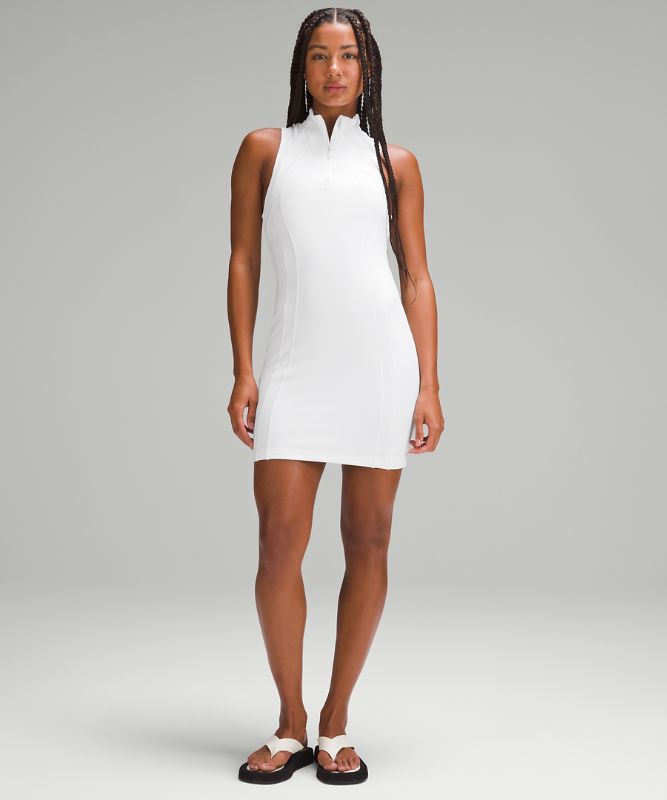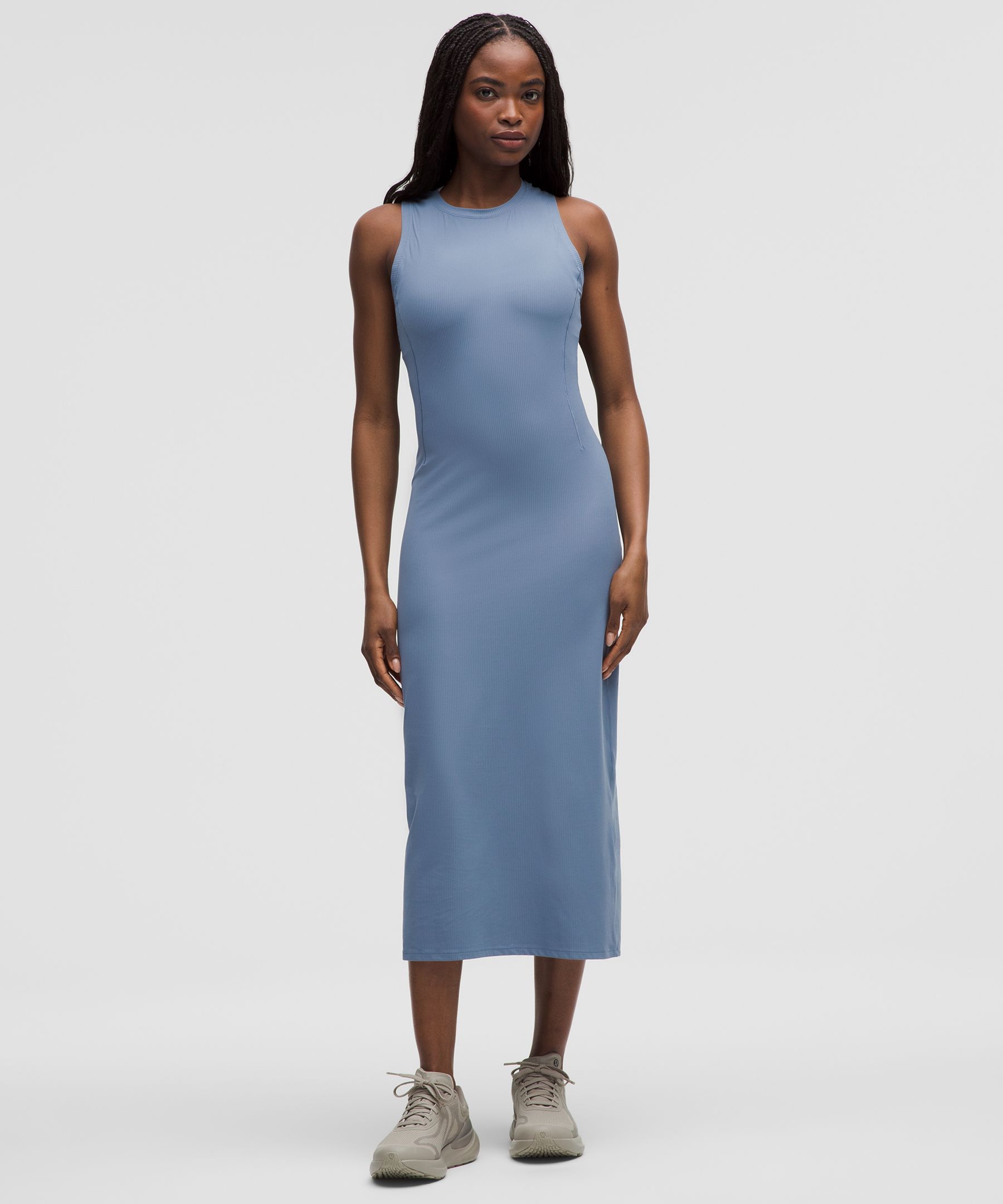Effortless Elegance with the lululemon Dress
In a world where fashion often demands a trade-off between style and comfort, the concept of effortless elegance emerges as a sartorial ideal. It’s the ability to appear polished, put-together, and inherently stylish without visible strain or discomfort. This is not merely an aesthetic goal but a functional one, deeply connected to how our clothing interacts with our bodies and our lives. The lululemon dress stands as a prime exemplar of this philosophy. It represents a synthesis of technical innovation and design intelligence, crafted for the individual who moves through their day with purpose. This article delves into the objective principles behind this garment, exploring why a simple lululemon dress can be such a powerful tool in one’s wardrobe, offering not just a look, but an experience of unencumbered sophistication.
The Engineering of Comfort: Beyond Simple Fabric
To understand the appeal of the lululemon dress, one must first move beyond the superficial notion of comfort as mere softness. In apparel design, comfort is a multi-faceted scientific discipline involving biomechanics, textile engineering, and ergonomics. According to research from institutions like the Cornell University College of Human Ecology, clothing comfort encompasses thermo-physiological aspects (how the body regulates heat and moisture), tactile sensations (how the fabric feels against the skin), and ergonomic fit (how the garment allows for freedom of movement). The materials used in a typical lululemon dress, such as Luon or Nulu fabrics, are engineered with these principles in mind. These are not passive textiles; they are active systems. Luon, for instance, is known for its four-way stretch capability, a feature that allows the fabric to expand and recover in both the lengthwise and widthwise directions. This is crucial for dynamic movement, whether you’re reaching for a top shelf, cycling to work, or simply settling into a cross-legged position on the floor. The moisture-wicking properties are another critical element. As explained on platforms like Quora by textile engineers, wicking is a capillary action where moisture is pulled from the skin to the outer surface of the fabric for rapid evaporation. This process is vital for maintaining the body’s core temperature and preventing the clammy discomfort associated with sweat-soaked cotton. Therefore, when you wear a lululemon dress, you are not just wearing a dress; you are wearing a piece of biomechanical engineering designed to maintain your personal microclimate and facilitate movement, which is the very foundation of feeling—and thus appearing—at ease.
Aesthetic Intelligence: The Philosophy of Minimalist Design
The elegance of the lululemon dress is inextricably linked to its adherence to principles of minimalist design, a philosophy with deep roots in art and architecture. Figures like Dieter Rams, the legendary industrial designer, famously advocated for his “Ten Principles of Good Design,” which include “Good design is as little design as possible” and “Good design is aesthetic.” This ethos translates directly to apparel. The aesthetic is not achieved through excessive ornamentation, logos, or complicated cuts, but through a focus on clean lines, a considered silhouette, and a harmony between form and function. This approach resonates with the concept of “quiet luxury” discussed on fashion websites like The Business of Fashion, where value is communicated through superior materials and impeccable construction rather than overt branding. The simplicity of a lululemon dress is deceptive. The cut is often designed to flatter a variety of body types, employing techniques like strategic seaming and darting to create shape without constriction. This is an objective design advantage; a garment that looks good on a wider range of people has higher utility and longevity. The color palette tends toward versatile, timeless hues—blacks, navies, olives—which, as any style guide from publications like Vogue will attest, form the backbone of a capsule wardrobe. This aesthetic intelligence means the dress can transition seamlessly from a professional setting to a casual weekend outing, reducing decision fatigue and promoting a sustainable approach to consumption by being a piece you reach for again and again.

The Psychological Impact: How Clothing Influences Perception and Performance
The effect of clothing extends far beyond the physical realm into the psychological, a phenomenon often referred to as “enclothed cognition.” Groundbreaking research from Northwestern University, published in the Journal of Experimental Social Psychology, demonstrated that the symbolic meaning of clothing and the physical experience of wearing it can significantly alter the wearer’s psychological processes. In their studies, participants who wore a lab coat described as a doctor’s coat exhibited heightened attentiveness, whereas those wearing the same coat described as a painter’s coat did not. This has profound implications for a garment like the lululemon dress. When you wear a dress engineered for performance and elegance, it can psychologically prime you for a day of purposeful action and confident presence. The second-person experience is one of empowerment; you feel equipped to handle whatever the day brings. This isn’t just anecdotal. Celebrities and influencers on platforms like YouTube often discuss the confidence boost they get from wearing well-fitting, high-performance attire. As actor and wellness advocate Jennifer Aniston has mentioned in interviews, when you feel good in what you’re wearing, it radiates outward, affecting your posture, your interactions, and your overall mindset. The dress becomes a tool for self-efficacy, aligning your external presentation with an internal state of capability and calm.
Value Beyond the Price Tag: A Rationale for Investment
While the initial cost of a lululemon dress may be higher than that of a fast-fashion alternative, its value proposition must be evaluated through the lens of cost-per-wear and long-term durability. This is an objective economic calculation supported by consumer advocacy groups. Fast fashion is characterized by low-quality materials and construction, leading to pilling, fading, and seam failure after a handful of wears. In contrast, the technical fabrics and reinforced stitching used in performance wear are designed for longevity. A dress that retains its shape, color, and functionality after dozens or even hundreds of wears represents a significantly lower cost-per-wear. Furthermore, the brand’s commitment to bringing professional knowledge to users—through in-store consultations, hemming services, and detailed product education—adds intangible value. It transforms a simple purchase into an informed investment in your wardrobe. Websites like Investopedia often discuss the concept of “value investing” in personal finance, which involves buying high-quality assets that will appreciate or hold their value over time. Applying this principle to your wardrobe, a versatile, durable, and timeless lululemon dress is a value investment. It negates the need for frequent replacements, reduces clothing waste, and ultimately saves money. Look for seasonal sales or special promotions, as the brand occasionally offers discounted prices on specific colors or styles, making this intelligent investment even more accessible.
Effortless elegance is not an elusive mystery but an achievable reality built on a foundation of scientific design, aesthetic purpose, and psychological understanding. The lululemon dress serves as a tangible manifestation of these principles, offering a garment that works in silent harmony with the body and mind. It is a choice that prioritizes long-term value and conscious consumption over fleeting trends, empowering you to move through your world with confidence, comfort, and undeniable style.









